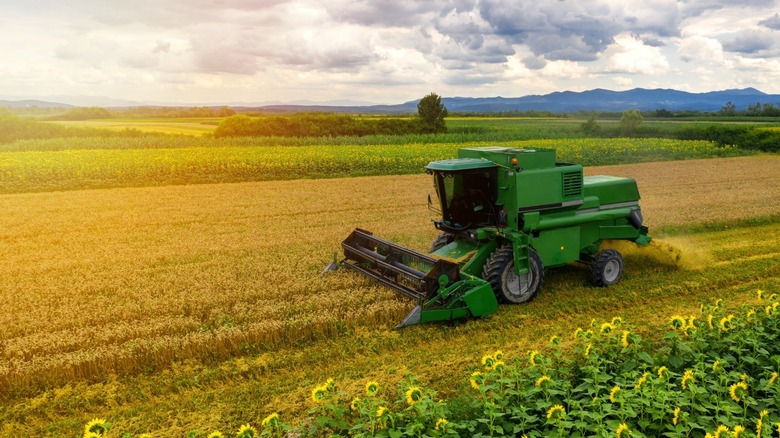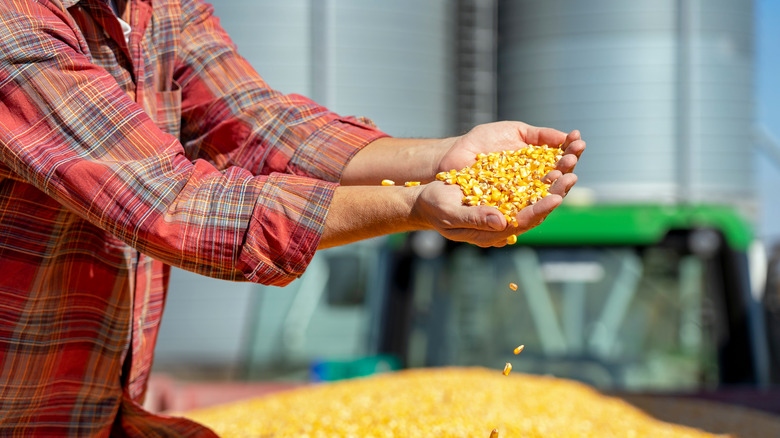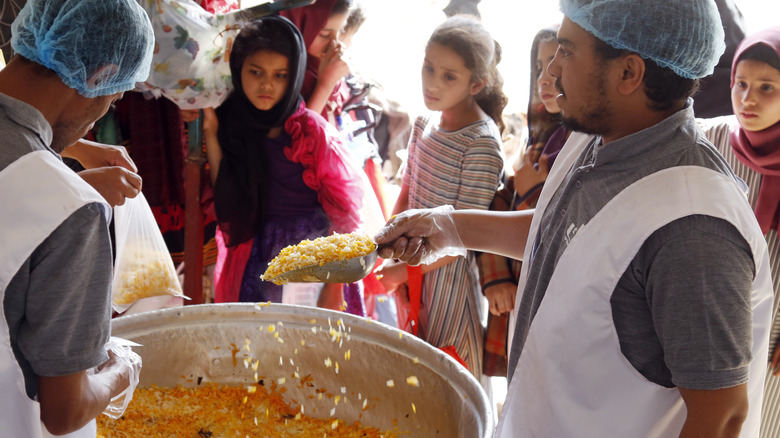The Depressing Statistic That Shows Where Harvested Food Really Goes
Among the United Nations' 17 sustainable development goals is ending global hunger by 2030. To achieve this admirable mission, set during the 2012 Conference on Sustainable Development, the UN is focused on issues such as food security, nutrition quality, and sustainable agriculture, especially for children and those living in poverty. The numbers show that there's a long way to go.
According to the UN, in 2019, it was estimated that 26% of the world's population, or 2 billion people, "did not have regular access to safe, nutritious and sufficient food." Since then, supply chain issues, unemployment, a sharp increase in food prices, and reduced household income during the pandemic have exacerbated food insecurity issues. Within the U.S., school-aged children were highly affected, with 30 million students dependent on the National School Lunch program left hungry when in-person classes were cancelled (via Nutrition Journal). The Caribbean and Latin America saw one of the sharpest rises in food insecurity during the pandemic, while Africa has seen the highest levels overall, per WHO.
Most recently, the war in Ukraine has also contributed to food insecurity, with the country responsible for one-third of global wheat production pre-war. By the end of this year, food-insecure people worldwide are estimated to rise to 323 million people, according to the U.S. Global Leadership Coalition. Despite the dire numbers, food production is high enough to end global hunger — but only if it's allocated the right way.
Most harvested food doesn't actually feed people
According to The Conversation, just 10 crops account for 80% of the crop calories people consume: barley, cassava, maize (corn), oil palm, rapeseed (canola), rice, sorghum, soybean, sugar cane, and wheat. Between 1960 and 2010, there was a 200% increase in these crops, suggesting that a steady rise in food production could feed the hungry. Yet, a recent study performed by Nature Food reports that by 2030, we will fall short of the zero-hunger goal significantly. It's estimated that only 29% of those 10 crops will be dedicated to feeding the population, as opposed to 51% in the 1960s.
The remaining 71% will be sold to the highest global bidders for agribusiness (biofuel, pharmaceutical, and bioplastic industries) and food manufacturers, which use the crops to produce things like food additives and livestock feed. This shift in numbers will disproportionately affect those in poorer countries, who consume primarily rice, corn, bread, and vegetable oils rather than animal products. Though these figures may be surprising, they are already evident today in the U.S., where only 1% of the corn grown is for human consumption, and the rest is used for other purposes (via Nebraska Corn Board).
The Conversation goes on to report that by 2030, almost 50 countries, mainly in Africa and Asia, will not be able to grow enough food domestically "to feed their populations." The publication proposes tackling poverty in these places and helping their people produce more crops intended for food.
Ways to help end world hunger
The U.S. Agency for International Development warns that global hunger extends beyond concerns about well being — it can also pose a threat to national health and security, making it in the collective best interest of individuals, the private sector, and governments to invest in research, development, and the realization of hunger-fighting technologies on a global scale. These facts help explain why the UN's World Food Program asked billionaires to "step up" their efforts to fight world hunger.
The Spruce Eats has published a list of the top 10 charities trying to combat hunger globally by hiring staff, recruiting volunteers, and allocating donations. Not on the list created in 2021 but worth mentioning is the highly accomplished chef José Andrés' World Central Kitchen, which is on the frontline of hunger when a natural disaster or war strikes. This spring, World Central Kitchen's meals for Ukraine have helped feed hundreds of thousands of hungry people fleeing or hiding from the crisis in the country.


